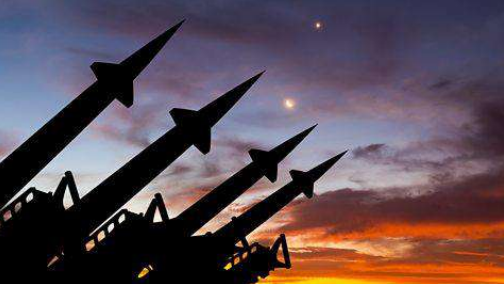
During a period of renewed diplomacy between the US and Iran over the latter’s nuclear programme, wider concerns about nuclear proliferation, nuclear safety, security risks linked to terrorism, and a deterioration in the overall security environment over the past two decades, the Gulf region continues to be at the centre of regional non-proliferation and arms control debates. The 2023 Saudi – Iranian normalization agreement suggests that further sub-regional and potentially pan-regional diplomacy, even on the contentious issue of nuclear programmes, might be possible. A Nuclear-Weapon-Free Zone (NWFZ) limited initially to the Gulf could be an imperfect but possibly more realistic and incremental solution that begins to address some of the complex security dilemmas that the Gulf and wider Middle East face. It could be folded into a deeper agreement on establishing a Weapons of Mass Destruction Free Zone (WMDFZ) in the Gulf, and/or a broader geographical agreement concerning a NWFZ in the Middle East where diplomacy allows.
For sure, Israel’s opaque position on its nuclear weapons capabilities, lack of attendance at NonProliferation Treaty (NPT) Review Conferences or WMDFZ conferences has been detrimental to establishing either a WMDFZ or a NWFZ in the Middle East. Other challenges are mainly associated with threat perception, distrust, institutional capacity and effectiveness of organisations and states charged with delivery, conflict of interest, and attempts to bypass a US policy review prior to the transfer of sensitive nuclear technology.
An NWFZ in the Gulf region, defined here as the Gulf Cooperation Council (GCC) states of Saudi Arabia, United Arab Emirates, Kuwait, Qatar, Bahrain, and Oman, as well as Iraq and Iran, is a logical initiative for the Biden administration and its successors to contemplate when considering the ‘multiplex world.’ In an increasingly contested global order where US influence is perceived to be waning, greater institutionalism could leverage existing US power and contribute to norms and practices carried forward into a new world order. Such changes could affect states such as China which are set to gain greater influence, including over the non-proliferation regime, partly the result of becoming a leader in the deployment of nuclear power technology by 2030. China, along with Russia and South Korea, has already been invited by Saudi Arabia to submit technical bids in May 2022 for two 1.4 giga-watt electric reactors at Khor Duweihin, a coastal area near the Kingdom’s borders with Qatar and the UAE.
The US, which has a 123 Agreement with the United Arab Emirates (a legally binding framework for peaceful nuclear cooperation), could extend such an agreement to Saudi Arabia in the short term in parallel with its diplomacy with Iran. Whilst such actions are at odds with the 2019 statement by Saudi Energy Minister Prince Abdulaziz bin Salman Al Saud that the Kingdom’s objective was to “go full cycle,” it could build on Crown Prince Mohammed bin Salman’s interest in securing US assistance to develop its civil nuclear program. There are still US–Saudi tensions which would need to be resolved before such a plan could come to fruition, but the demand and supply rationale is clear. Indeed, such an agreement could conceivably be folded into the Biden administration’s push for Saudi – Israeli normalisation, but without any room to advance the Arab Peace Initiative (API) which Saudi Arabia took to the Arab League in 2002, and was adopted shortly after, such an outcome has been considered a ‘long-shot.’
Key to concluding a 123 Agreement with Saudi Arabia would be its agreeing to forego the mostproliferation-sensitive nuclear facilities including those for enriching uranium and reprocessing spent fuel to obtain plutonium. A 123 Agreement would also push the Kingdom to sign onto the NPT’s Additional Protocol which would cover mines and other locations such as its facility to mill uranium oxide (also known as yellowcake) at Al-Ula. An agreement has been high on the priority list of successive US administrations, including the Obama administration in 2012 and the Trumpadministration in 2018. It would help the Biden administration to boost nuclear-related exports and manage the proliferation risks posed by Iran and Saudi Arabia. The “gold standard” established in the Emirati case, where domestic enrichment and reprocessing was relinquished in exchange for enhanced US cooperation, could be expanded into a regional norm whilst other civil nuclear programs in the Middle East are being rolled out.
An NWFZ could then be achieved in a number of ways. It would likely build on the Treaty of Pelindaba, which created a NWFZ on the African continent in 2009. Importantly, as Jozef Goldblat noted in a 2005 Research Bulletin for the Gulf Research Center, a treaty dealing with a zone should not be a carbon copy of existing zonal treaties, but deal with the major controversial issues to strengthen security and complement the global NPT. Technical and political negotiations could be lengthy, especially when considering the security implications of non-regional states operating in the area such as the US, and what shape or form a credible security assurance that satisfies all parties will take. Ideas could continue to be facilitated through the use of Track Two diplomacy.
Key obligations of state parties might include renouncing nuclear weapons and taking action against non-state actor proliferation activities (assisted by other states under UN Security Council Resolution 1540), prohibiting the stationing of nuclear weapons on a territory, prohibiting nuclear tests as a party to the Comprehensive Nuclear Test Ban Treaty (which Iran and others need to ratify), and declaring existing nuclear weapons and programmes. For Iran to join, nuclear cooperation and the mood music surrounding negotiations would need to advance. Ideally, such measures would have been a logical follow on from the Joint Comprehensive Plan of Action (JCPOA), signed in 2015 with leading world powers, primarily to overcome strict sunset clauses on Iran’s nuclear, missile production, arms trade, and conventional weapons clauses, with dates ranging from 2020 to 2041. The agreement was unilaterally abrogated by President Trump in 2018. Tehran’s threat perception of Israel in light of its nuclear programme (and vice versa) is particularly stark, and so too is Riyadh’s. Saudi Arabia continues to develop its missile and drone programme with China in response to recent Iranian or Iranian-sponsored attacks.
The NPT regime has already been undermined by tense US–Russian relations caused by the warin Ukraine. The chances of US–China cooperation are limited but perhaps better in light of China’s proclaimed policy. For example, at the NPT Review Conference in 2010, China confirmed: ‘In the Middle East region, where the political and security situation is complicated, establishing a nuclear-weapon-free zone is of special significance in efforts to ease the tensions of the regional situation and to maintain regional peace, security, and stability. China has always actively supported relevant initiatives proposed by countries in the Middle East and has voted for all the resolutions on the establishment of a nuclear-weapon-free zone in the Middle East adopted by the General Assembly every year since 1974.’ By establishing a NWFZ in an oil and gas-rich region susceptible to conflict, the US could establish a legacy of non-proliferation which would continue to serve its commercial interests well into the future.
Whilst China has shown interest in brokering peace between Israel and Palestine, it has expressed no interest in being a security guarantor in the Gulf in the same way the US has. For the final piece of the NWFZ puzzle to fall into place, a détente between Iran and the US (inclusive of Israel) would be required in order to alleviate the imminent threat felt in Tehran and help address its sense of insecurity which dates back to World War II and was compounded by the 2003 US-led invasion of Iraq. Whether as part of ‘grand bargain’ similar to the alleged offer made by Iran in 2003 or a simpler strategic transaction covering the nuclear and military domains (i.e. delivery systems), a nuclear deal that builds confidence and restores a working relationship could yield significant progress as the potential for nuclear proliferation and safety concerns in the region intensify.
* Robert Mason is a non-resident fellow with the Gulf Research Center

